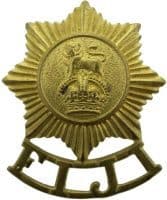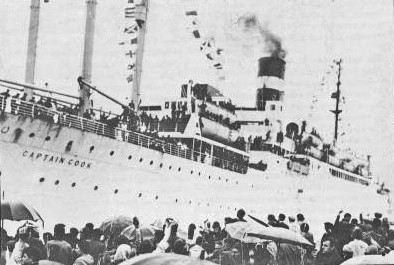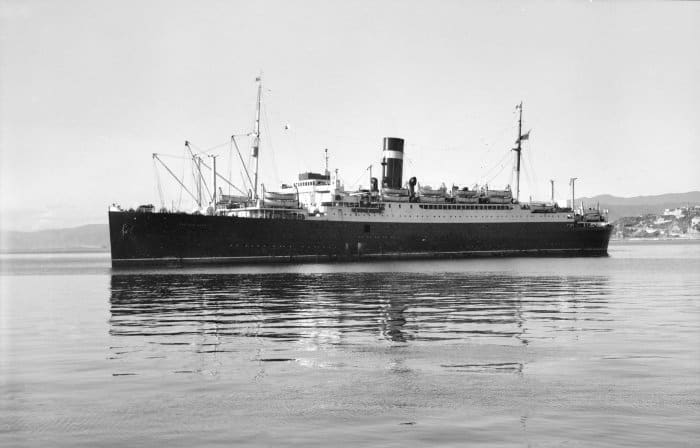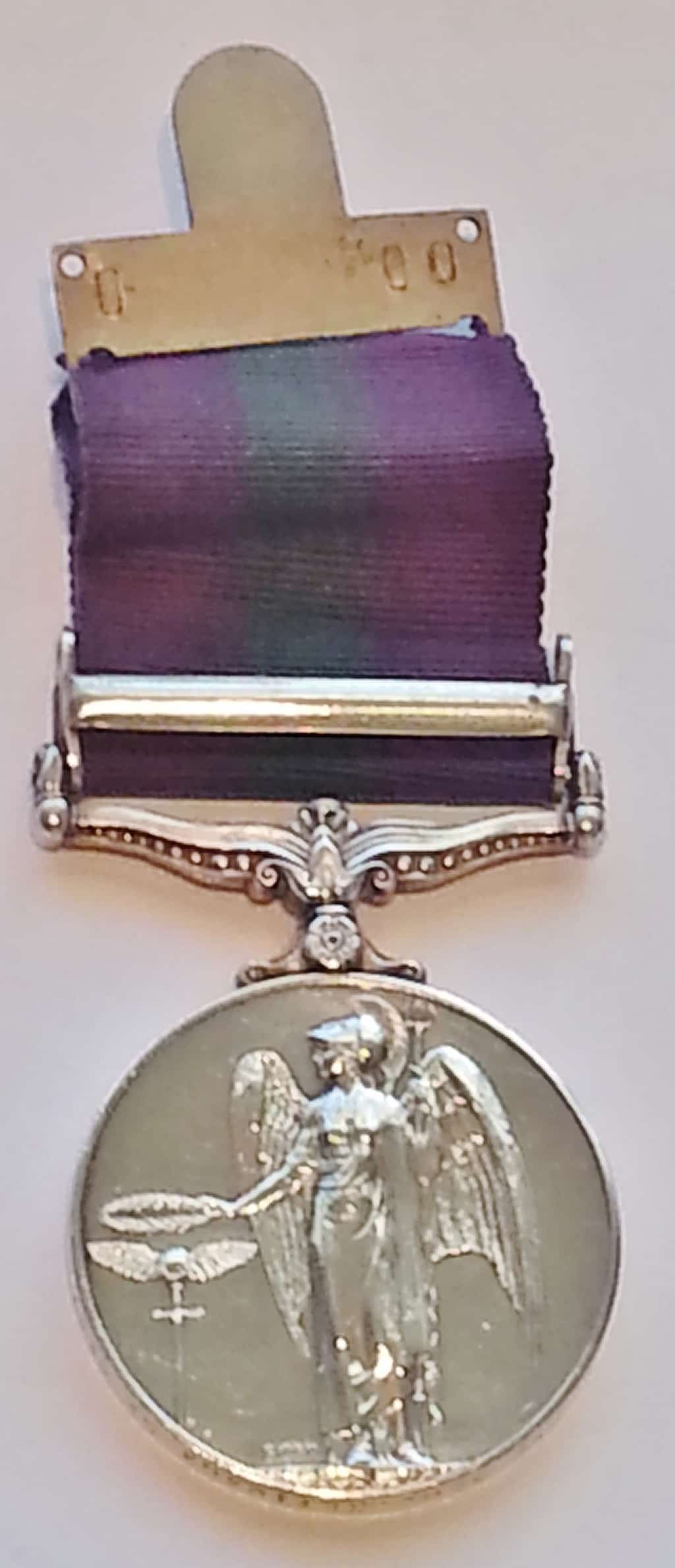340572 ~ ALFRED HENRY RETIMANA
The purchase from Trade-me of a General Service Medal, 1918-1962 with clasp “MALAYA” by a private collector some 10 years ago was recently sent to MRNZ, now being surplus to the collector’s requirements.
Unlike the campaign medals and stars issued for Second World War service, all official medals issued after the WW2 were named to their recipients. A named medal should it be lost, stolen or sold considerably increases the possibility of reuniting it with its owner (if living) or a descendant family member significantly greater. This particular medal was named to a NZ Infantry soldier: 340572 PTE. A. H. RETIMANA. NZ REGT. Alfred Retimana’s General Service Medal (GSM) with clasp MALAYA indicated he had served in that country with a New Zealand infantry battalion during the Malayan Emergency, a guerrilla war which lasted from 1948 to 1960.
Without a digitized file on the AWMM Cenotaph website to guide me with potential contact information, it did not take too much longer to locate Alfred, known as “Alf”, and Mihiata Retimana’s family from the NZ Electoral Rolls. Fortunately for me Alf and Mihi had spent a good proportion of their married lives living in the Wellington, the Hutt Valley area, and as luck would have it they were still there.
Malayan Emergency
Also at that time, New Zealand was contributing troops to the Malayan Emergency which had arisen out of an attempt by the Malayan Communist Party to overthrow the British colonial administration which ran Malaya. The Emergency had been declared on 18 June 1948 in response to the murder of three British rubber planters in northern Malaya, and over the next 12 years of conflict New Zealand soldiers, sailors and airmen made a significant contribution to the Commonwealth effort to eradicate communist insurgents from the country.
NZ Army involvement
New Zealand’s Armed Forces first became involved in the Malayan Emergency in 1949 when a flight of 41 Squadron Dakotas were deployed to Singapore as communist victories in mainland China appeared to threaten Hong Kong. Attached to the British Far East Air Force, these aircraft flew regularly to Hong Kong. One Dakota was stationed in Kuala Lumpur to drop supplies to forces engaging the Malayan Races Liberation Army (MRLA). By the time the flight was withdrawn in December 1951, it had made 211 sorties and dropped 2840 kg of supplies.

Far East Strategic Reserve – 28 ANZUK Brigade


Emergency
Whilst the security situation had been stabilised with the elimination of a good proportion of the existing CTs and their organisations disrupted, there was still a core of dedicated fanatics who would continue to recruit, rebuild and come again. The threat and the increasing involvement of Indonesia and its support of the communist agenda resulted in renewed violence and opportunistic atrocities. The isolated states of North Borneo and Sarawak being on a predominantly Indonesian dominated island, were also under direct threat from escalating Indonesian military action. As long as the threat existed, NZ would continue to lend its support and so a re-think of NZ’s commitment to the region led to the decision to replace the NZSAS Squadron in the Strategic Reserve with a dedicated NZ infantry battalion to join the now re-organised and named, 28th British Commonwealth Brigade Group. In addition, the RNZAF and RNZN who supported operations were located between Changi (Singapore) and Butterworth (Malaya) for the RNZAF, and the ports at Sembawang (Singapore) & Klang (Malaya) for the RNZN.
1st Battalion, New Zealand Regiment

The result was the formation of the 1st Battalion, New Zealand (Infantry) Regiment (1/NZ Regt) at Burnham Camp on the 1st of August, 1957. On 28 November 1957 the 1st Battalion NZ Regt, commanded by LtCol W. R. K. (Kim) Morrison, DSO paraded through Wellington and embarked on the SS Captain Cook bound for Malaya. Unlike their WW1 and WW2 predecessors who had been transported overseas in converted and stripped passenger liners and merchant vessels, the Battalion travelled in comfort and style aboard the TSS Captain Cook. On arrival, the Battalion’s disposition would be scattered:- the Battalion Command Post was at Ipoh, Battalion HQ and HQ Company at Taiping, Alpha and Charlie Companies at Sungei Kuang, Bravo Company at Tanjong Rambutan, and Delta Company at Tanah Hitam.
Training commenced at the Jungle Warfare School at Kota Tinggi until the Battalion relieved the Royal Lincoln Regiment in the State of Perak. In December 1957 the Battalion was engaged in a 17th Gurka Division operation (Ginger) to clear Perak, Perlis, Kedah and Kelantan of Communist Terrorists. From March 1958, 1/NZ Regt had taken part in numerous search and destroy operations to try and clear the state of Perak of CT insurgents. Operating from Ipoh and later Grik, it mounted a series of deep jungle patrols were highly successful and cost the Battalion few casualties. According to the Commander of 28th Commonwealth Infantry Brigade, 1/NZ Regt had more than double the number of captures and surrenders, unsurpassed by any other unit in the Brigade.
2nd Battalion, New Zealand Regiment
With the formation of the 1st Battalion, it was well recognised that in order to maintain the operational edge and to allow for its troop rest and recovery, 1/NZ Regt would at some stage need to be rotated out of theatre and replaced, a process that would continue for the foreseeable future as long as NZ remained committed to operations in Malaya. To that end, the 2nd Battalion, NZ Regiment (2/NZ Regt) was raised at Burnham and prepared to take its place. As the majority of Regiment personnel were already tied up in Malaya and there were insufficient remaining riflemen to form a second battalion, recruitment of additional volunteers was necessary. These were made up from the Territorial Forces ranks and from a proportion who had successfully completed their Compulsory Military Training (CMT), volunteers like Alf Retimana who could be quickly bought up to speed with the requirements of active service.
~~~~~~~~~~~~~~~~~~~~~~~~~~~

After extensive preparatory training at the NZ Regiment’s home in Burnham Camp, Private Retimana was deployed to Malaya as a member of the Headquarters Company, 2nd Battalion NZ Regiment in November 1959. The 2nd Battalion also travelled in comfort and style aboard the TSS Captain Cook, sailing from Wellington via Fremantle in Western Australia, and on to Penang on the northern west coast of the Malay Peninsula.
The 2nd Battalion NZ Regt under command of LtCol D. J. (Jock) Aitken saw the relief of 1/NZ Regt on the 28 November 1959. As with 1/NZ Regt, the 2nd Battalion was also spread over several locations:- the Forward Command Post and Admin were at Grik, Battalion HQ and HQ Company at Taiping, Alpha and Charlie Companies were at Fort Chabai, Bravo Company at Alis Landing and Delta Company at Fort Kemar.
~~~~~~~~~~~~~~~~~~~~~~~~~~~
Most of the remaining CT guerrillas had retreated across the border into southern Thailand which greatly improved the security situation and was reflected in the official termination of the ‘Emergency’ on 31 July 1960. In November 1961, the 2/NZ Regt was relieved by an airlifted 2nd/1st Battalion NZ Regiment (2/1NZ Regt) commanded by LtCol L. Pearce – no more luxury cruises and pink gins on the ocean wave! The NZ battalions would now also have a new home. The 2/1/NZ Regt was moved from Ipoh and Taiping to the Terendak Cantonment (Terendak Garrison Camp) near Malacca (Melaka) which was where the entire 28th Commonwealth Brigade Group was to be co-located. The 2/1 NZ Regt was allocated an area of land and buildings with the boundaries of Terendak Camp which was officially named “Wellington Lines.” Terendak remained the NZ Regiment’s (later 1/RNZIR) Forward Operating Base (FOB) from this time until it was eventually withdrawn to Nee Soon Garrison, Singapore in December 1969.
Trouble however was brewing in the region which would see the newly created Royal New Zealand Infantry Regiment (RNZIR) committed for the next decade in both Malaya and Borneo to deal with the resurgence of determined Communist guerrilla and military backed Indonesian insurgents who threatened the stability of the Malayan government, its people and states. This was a period of undeclared war with Indonesia, a period known as ‘Confrontation.’
Costs and benefits
Approximately 4000 New Zealand servicemen served in Malaya/Malaysia between 1948 and 1966, 15 of whom lost their lives – three as a result of enemy action. Among the casualties was the crew of a Bristol Freighter which flew into a mountain in 1956. The New Zealand Army’s experience of jungle warfare had been limited to those actions by 2NZEF’s 3rd Division during the Pacific Campaign. Post WW2 preparations had been based around an open, conventional style of warfare however Malaya marked a new departure from these and had provided training opportunities in a difficult but not too threatening tropical operating environment. Operations in Malaya during the Emergency and later Confrontation, provided a sound basis for testing ideas, trying new methods and honing skills necessary to win against an insurgent guerrilla enemy. The infantry and support arms experiences in Malaya would prove to be highly beneficial for NZ’s next commitment to a guerrilla war – South Vietnam.
Selected text and reference material above: Courtesy of NZ History – https://nzhistory.govt.nz/war/the-malayan-emergency and Malayan Veterans Assn website.
Alf’s General Service Medal
When I phoned the Retimana residence I spoke first with Alf’s wife, Mihi who said they were still in the process of moving into a new home. She also told me the background to Alf’s missing medal.
Alf then spoke to me telling me that after the 2nd Battalion had completed its 12 months on operations in the jungles of Malaya, they returned to NZ in 1961. When Alf had concluded his commitments to the NZ Regiment and Burnham, he returned to Wellington. Once in ‘civvy street’ he took on a position as a Crane Operator in Petone which he remained doing for many years.
Alf was most surprised to hear that his General Service Medal (GSM) had turned up. He thought it was gone forever and had subsequently bought a replica medal as a replacement. He said “I never thought I would see that again” and went on to explain that the medal had been stolen with other household valuables some 20 years before as a result of a break-in at their home in Petone.
After taking a number of ribbings by his mates over the years for not wearing his GSM, Alf had not long ago bought a replica medal so he could attend Anzac Days and reunions with a full complement of medals. Coincidentally, his missing medal had been the subject of discussion just last year when Alf attended a reunion at Tauranga with his mates from the 2nd Battalion, those with whom he had gone to Malaya with in 1959.
Since his discharge from the Army, Alf Retimana has also been awarded the following:
- New Zealand Operational Service Medal (2002)
- Pingat Jasa Malaysia Medal (2004)
- New Zealand Defence Service Medal with clasps, CMT and REGULAR (2011)
~~~~~~~~~~~~~~~~~~~~~~~~~~~
Alf’s medal was couriered to him last week. He will now be able to add his original General Service Medal 1918-1962, with clasp MALAYA to complete his official medal entitlement.
….. Te taonga me te tiaki i o taonga Alf.
The reunited medal tally is now 214.









